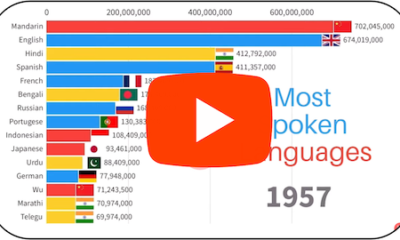The Goldilocks effect – Economic and market update 4Q 17
The year 2017 was defined by a near-perfect goldilocks backdrop of steady global growth, modest inflation, and still-accommodative monetary policy, the combination of which helped fuel a broad-based rally in asset prices.

Global equities took a step higher, with non-US equities outperforming their US counterparts for the first time in five years, bolstered by a weak dollar and widespread improvement in growth across countries. Even previous weak links of the developed world such as Europe and Japan posted above-trend growth numbers, as rising sentiment, a modest upturn in CAPEX, and the ease of the post-GFC deleveraging cycle gave fresh momentum to domestic demand. In emerging markets, fundamentals have also improved more broadly, against the backdrop of solid Chinese economic data, higher commodity prices, and narrowing current account deficits. On the other hand, Australia appeared to be de-synchronised with the global recovery for most of the year, though the economy did appear to pick up speed as the year progressed, in part due to the effect of coming off a low base from the corresponding quarter in the previous year. For the whole year, the local share market was able to lock in a solid return of 11.9%—its best annual performance since 2013.
All that said, the current backdrop of strong market returns and unusually low financial volatility do raise some concern, as it underscores widespread complacency among investors, despite potential risks being well-known. In particular, valuations in various risk asset classes appear stretched, and the start of monetary policy normalisation in many parts of the world could potentially lead to unexpected consequences. Overall, the odds of a bumpy adjustment in financial markets appear much higher than before, with downside risks, in our view, being more elevated in the equity market than in the bond market.
Of most major economies, the US seems most susceptible to a market correction, with our fair-value CAPE suggesting that US stock valuations are approaching overvalued territory—even after adjusting for lower inflation and interest rates. Meanwhile, the lack of strong inflationary pressures despite robust growth and tight labor markets was undoubtedly a key defining element of the US economy in 2017. Yet that did not stop the Federal Open Market Committee from voting to increase the Federal Funds Rate target range by 25bps to 1.25-1.5% in December. The risk in 2018 is that the tight labour market will grow tighter, driving the unemployment rate well below 4%. Expectations of additional rate hikes would inevitably follow, ending an era of extraordinary monetary support in the US and possibly leading markets to price in more aggressive normalisation plans elsewhere. None of this is status quo.
Global fixed income investments continued to deliver muted returns against a backdrop of low interest rates and low yields across regions, including Australia. Reflecting subdued wage growth and mild inflationary pressure, the Reserve Bank of Australia (RBA) held the cash rate unchanged at 1.5% in December, marking the 16th straight month it has been on hold. Annual returns for cash assets are expected to be muted as official policy rates remain near historic lows.
Europe—risks diminish
Near term Euroscepticism risks appear to have diminished, with rising popular support for the EU in most European countries, though Italian elections in March 2018 could result in a victory to the Eurosceptic populist party, the Five Star Movement. Risks around Brexit are also seen to be more balanced, after the EU and UK made sufficient progress in the financial settlement bill in December, which allowed Brexit negotiations to move into their second phase of discussing future relationships.
China—surprises to the upside
Growth surprised to the upside in 2017, with the full-year GDP growth number coming in at 6.9%, comfortably above the government’s annual 6.5% target. Nonetheless, ongoing policy and regulatory tightening should begin weighing on activity more heavily in 1H18, especially as the government becomes increasingly focus on the “quality” rather than “quantity” of growth this year. In 2018, we expect to see headline GDP slow to around 6.5%.
Japan—rising with the tide
The economy is marching along, with real GDP expanding for seven consecutive quarters, the longest streak for Japan in 16 years. While the expansion so far has come primarily from an acceleration in the export cycle and a mildly expansionary fiscal policy, we expect the recovery to become more broad-based in 2018, as rising confidence, a gradual increase in real wages, and solid profitability leave room for domestic demand to pick-up in 2018. The Bank of Japan is likely to adopt a gradual and flexible approach in 2018, staying vigilant against potentials risks to both the inflation outlook and financial stability.
Australia—rates dilemma
Locally we saw a mixed performance throughout 2017, though the latest national accounts showed an acceleration in year-on-year GDP growth to a slightly above-trend of 2.8% in Q3 2017. Nonetheless, Australia may struggle to sustain this level of growth next year, as the effect of coming off a low base fades and as high leverage and fading dwelling investments put a limit on how fast domestic demand can accelerate. The RBA faces a major dilemma over the next few years, on whether to hike “in the name of financial stability”, or cut “in the name of inflation and wages”. Against this backdrop, the RBA will probably “drag their feet” and wait until late 2018 at the earliest to raise the cash rate.
Qian Wang, Senior Economist
02 February 2018
www.vanguardinvestments.com.au
Sofie Korac is an Authorised Representative (No. 400164) of Prudentia Financial Planning Pty Ltd, AFSL 544118 and a member of the Association of Financial Advisers.
Financial Advice Sydney and the North Shore Office based in Gordon NSW







